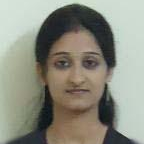
Ashwini V. Nagpure
Work place: Depatment of CT.,Yashwantrao Chavan College of Engineering,Nagpur, Maharashtra, India
E-mail: ashld8788@gmail.com
Website:
Research Interests: Computer Science & Information Technology
Biography
Ashwini Nagpure has received diploma in Information Technology from BTE Mumbai in 2008, and B.E. in Computer Technology from R.T.M.N.U. Nagpur in 2012. She was undertaken various projects during her diploma and degree program based on C++, Java and Matlab
Author Articles
An Augmentation of Topology Control Algorithm for Energy Saving in WSN Integrated into Street Lighting Control
By Ashwini V. Nagpure Lalit B. Damahe Sulabha V. Patil
DOI: https://doi.org/10.5815/ijisa.2015.06.07, Pub. Date: 8 May 2015
Energy saving and improve the life time of the sensor node is main focus in the recent years for the researchers hence one of the application domain (Street light monitoring and controlling) of sensor required attention towards this direction. For contributing in this domain we have proposed a scheme for Street light controlling using distributed topology control (TC). The optimize version of A3 protocol reduces the number of messages send/received by the sensors which ultimately leads to the reduction of energy requirement. Experiments are carried on street light scenario for different no. of nodes by maintaining communication using Zigbee protocol. The performance of our extension is evaluated using, no. of messages send/receive & energy consumed during topology building and our approach is having good results as compared to the approach used for this type of network.
[...] Read more.RBCs and Parasites Segmentation from Thin Smear Blood Cell Images
By Vishal V. Panchbhai Lalit B. Damahe Ashwini V. Nagpure Priyanka N. Chopkar
DOI: https://doi.org/10.5815/ijigsp.2012.10.08, Pub. Date: 28 Sep. 2012
Manually examine the blood smear for the detection of malaria parasite consumes lot of time for trend pathologists. As the computational power increases, the role of automatic visual inspection becomes more important. An automated system is therefore needed to complete as much work as possible for the identification of malaria parasites. The given scheme based on used of RGB color space, G layer processing, and segmentation of Red Blood Cells (RBC) as well as cell parasites by auto-thresholding with offset value and use of morphological processing. The work compare with the manual results obtained from the pathology lab, based on total RBC count and cells parasite count. The designed system successfully detects malaria parasites and RBC cells in thin smear image.
[...] Read more.Other Articles
Subscribe to receive issue release notifications and newsletters from MECS Press journals